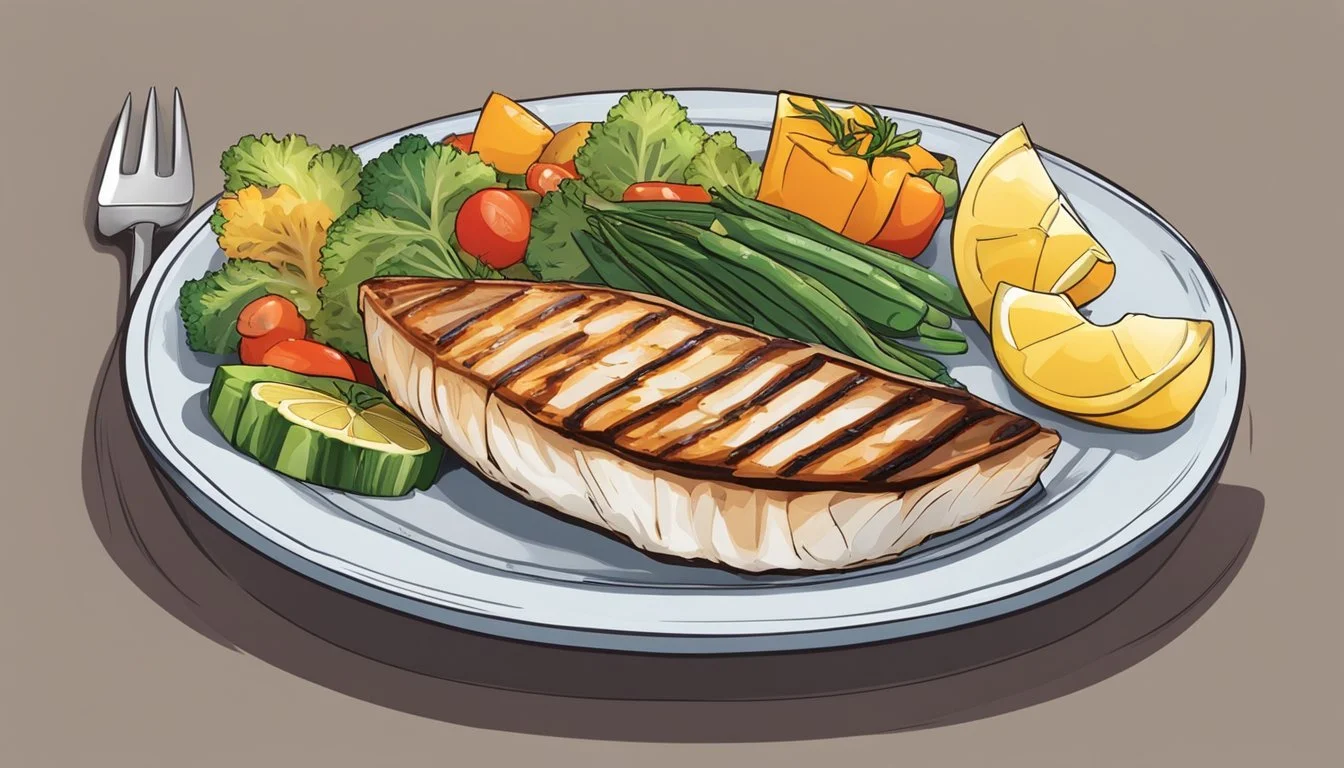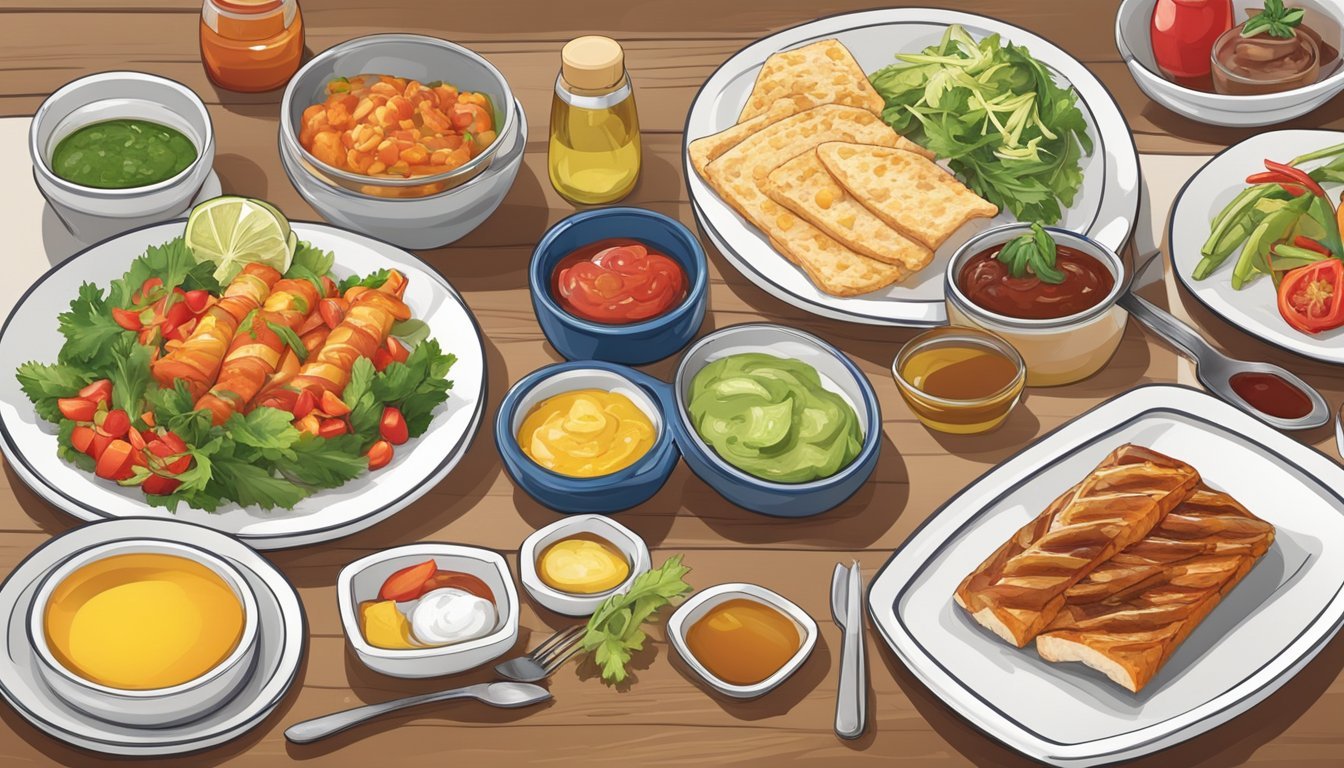Wahoo Substitutes
Best Alternatives for Your Recipes
When it comes to finding substitutes for Wahoo, a versatile and meaty fish, there are several seafood options that can deliver similar flavors and textures. Mahi-mahi, Spanish mackerel, yellowfin tuna, kingfish, and swordfish are excellent substitutes that can be used in various recipes. Each of these alternatives provides a firm texture and a mild, slightly sweet taste, making them suitable for grilling, baking, or broiling.
For those looking to maintain a nutritious diet, these substitutes are also rich in protein and offer many health benefits. For instance, yellowfin tuna and swordfish are renowned for their high protein content, making them ideal for those wanting to increase their protein intake. These fish are not only delicious but also contribute positively to a balanced and healthy diet.
Utilizing these substitutes can help diversify your meal planning while still enjoying the rich and satisfying taste of seafood. Whether you're preparing a quick weeknight dinner or a special weekend meal, these Wahoo alternatives ensure you won't miss out on flavor or nutritional value.
Understanding Wahoo
Wahoo, known for its firm flesh and mild flavor, is a popular choice among seafood enthusiasts. This section covers the biology and distribution, culinary profile, and nutritional value of wahoo in detail.
Biology and Distribution
Wahoo (Acanthocybium solandri) is a fast-swimming pelagic fish found in tropical and subtropical seas worldwide. Typically found in the Atlantic, Indian, and Pacific Oceans, wahoo inhabit deep, open waters. They are known for their elongated bodies and distinctive vertical blue stripes. Reaching speeds up to 60 mph, wahoo are formidable predators, preying on smaller fish and squid. They can grow up to 8 feet in length and weigh as much as 180 pounds, making them a prized catch for sport fishermen due to their size and speed.
Culinary Profile
Wahoo is prized for its firm, white flesh and mild, slightly sweet flavor. Its texture is lean and meaty, making it suitable for various cooking methods such as grilling, baking, and searing. In Hawaiian cuisine, wahoo is known as "Ono," which means "delicious." Its versatility allows it to pair well with bold marinades and spices. Popular dishes include wahoo steaks, ceviche, and fish tacos. Because it flakes easily and maintains moisture, wahoo can be the centerpiece of a healthy meal. When cooking, it's essential to avoid overcooking to maintain its delicate texture.
Nutritional Value
Wahoo is a nutritious fish rich in essential nutrients. It is an excellent source of protein, making it a healthy option for muscle building and repair. Omega-3 fatty acids present in wahoo support heart health by reducing inflammation and improving cholesterol levels.
Wahoo also provides vitamins B6, B12, and D, which are crucial for energy metabolism, red blood cell formation, and bone health. Minerals such as iron, zinc, magnesium, and potassium support various bodily functions including immune response and muscle contraction. Additionally, wahoo is low in fat and calories, making it a suitable choice for those seeking a balanced diet.
This combination of nutritional benefits makes wahoo both a tasty and healthy component of varied cuisines and dietary preferences.
Cooking Techniques
There are several effective methods to cook wahoo, ensuring it retains freshness and flavor. Grilling, baking, broiling, searing, and poaching are some of the most popular techniques to create a delicious dish.
Grilling Wahoo
Grilling wahoo brings out a unique smoky flavor while sealing in its moisture and tenderness. To start, preheat the grill to medium-high heat. Lightly oil the grates to prevent sticking.
Coat the wahoo fillets with olive oil, then place them on the grill. Cook for approximately 4-6 minutes per side until the fish is opaque and flakes easily with a fork. To enhance the flavor, marinate the fish with a mixture of lemon juice, garlic, and herbs before grilling.
Baking and Broiling
Baking and broiling are excellent choices for cooking wahoo, providing a uniformly cooked, tender result. Preheat the oven to 400°F (200°C) for baking or set the broiler to high heat. Place the wahoo fillets on a baking sheet lined with parchment paper.
Brush with olive oil, sprinkle with salt, pepper, and herbs. For baking, cook for 10-12 minutes. For broiling, place the fish close to the heat source and cook for 5-7 minutes, monitoring closely to avoid burning. The fish should be opaque and flake easily with a fork.
Searing and Poaching
Searing wahoo creates a crispy exterior while maintaining a moist interior. Heat a tablespoon of olive oil in a skillet over medium-high heat. Season the fillets with salt, pepper, and herbs. Sear each side for 3-4 minutes until golden brown and cooked through.
Poaching provides a delicate flavor and texture. In a pan, combine water, lemon juice, garlic, and fresh herbs. Bring to a simmer over medium heat. Add the wahoo fillets and poach for 5-7 minutes until the fish is opaque and flakes easily.
Each technique showcases the fresh, delicate flavor of wahoo while ensuring the fish remains moist and flavorful.
Alternative Fish Selection
When looking for alternatives to wahoo, consider factors such as flavor profile, sustainability, and cost. Here are a few options within various categories to help guide your selection.
Tuna and Mackerel Varieties
Tuna and mackerel are excellent substitutes for wahoo due to their similar texture and flavor. Yellowfin tuna and swordfish stand out as exceptional choices, providing a meaty texture and rich taste. Spanish mackerel and kingfish offer more budget-friendly options with a slightly stronger flavor profile.
Yellowfin Tuna: Muscle-rich and flavorful, it can be cooked in various ways, from grilling to searing.
Swordfish: Also firm and meaty, it works well for barbecuing and pan-searing.
Spanish Mackerel & Kingfish: Both are versatile and can be grilled or smoked, offering strong flavors.
White-Fleshed Fish Alternatives
White-fleshed fish offer a different, yet equally enjoyable, culinary experience compared to wahoo. Mahi-Mahi and Grouper provide a firm texture and a mild, sweet flavor that can be prepared similarly to wahoo.
Mahi-Mahi: Known for its moderately firm texture and mild flavor, it's perfect for grilling or baking.
Grouper: With its delicate yet firm flesh, this fish can be baked, broiled, or grilled seamlessly.
Halibut & Sole: These are excellent for lighter dishes needing a subtler taste but with a robust texture.
Other Seafood Substitutes
Other seafood options offer diversity in flavor and texture, broadening culinary possibilities. Sturgeon and tilapia present versatile options for a variety of recipes.
Sturgeon: Its rich, dense meat makes it suitable for robust dishes such as steaks and stew.
Tilapia: Offers a lighter, milder flavor, making it ideal for delicate dishes like poaching or pan-frying.
Selecting the right substitute for wahoo involves choosing fish that closely match its taste and texture while also considering other factors like sustainability and cost. Whether opting for a firm, meaty option like swordfish or a lighter choice like halibut, the alternatives provided cater to a range of culinary needs.
Preparing Wahoo for Cooking
Selecting a fresh wahoo and preparing it correctly is crucial for achieving the best flavor and texture. Proper cleaning and filleting will ensure the fish cooks evenly and tastes delicious.
Selection and Freshness
When choosing wahoo, prioritize freshness to enhance taste and quality. At the fish market, look for wahoo fillets with a bright, clear color. The fish should appear moist and slightly translucent when raw, with firm texture.
Fresh wahoo should have a clean, ocean-like scent. Avoid any fillets that smell overly "fishy" or sour, as these indicate spoilage. If you catch your own, store it on ice immediately to maintain freshness until you can prepare it for cooking. For those using frozen wahoo, ensure it's properly thawed in the refrigerator for several hours before use.
Cleaning and Filleting
Start by rinsing the wahoo fillets with cold water and pat them dry with a paper towel. This removes any residual scales or debris and prepares the surface for further cleaning.
Remove any remaining scales and, using a sharp fillet knife, cut along the backbone to separate the fillet from the ribs. Be sure to strip off any skin if not already done by the fishmonger. Check for and remove small bones to ensure the fillets are bone-free, making them safer and more pleasant to eat. This meticulous cleaning and filleting will set the stage for an enjoyable meal.
Serving Suggestions
Wahoo is a versatile fish known for its mild flavor and firm texture, making it suitable for a variety of culinary preparations. It can be enjoyed both raw and cooked, each method highlighting different aspects of the fish's unique qualities.
Raw Preparations
Wahoo's firm texture and mild flavor make it ideal for raw preparations like sashimi and sushi. For sashimi, thin slices should be cut against the grain to ensure tenderness. Pairing with a dipping sauce of soy, wasabi, and pickled ginger enhances the natural flavors.
Sushi rolls can include wahoo as the central ingredient, combined with avocado, cucumber, and a touch of spicy mayo for added depth. Ceviche is another excellent option. Marinate wahoo cubes in lime juice, mix with diced onions, cilantro, and a hint of chili for a refreshing dish that's bright and flavorful. Freshness of the wahoo is crucial for these preparations to ensure the best taste and texture.
Cooked Presentations
Grilled wahoo showcases the meaty texture and mild flavor of the fish. A simple marinade of olive oil, lemon juice, garlic, and black pepper works well. Grill the fillets for 4-5 minutes per side until the fish flakes easily with a fork.
Baked wahoo is another method that keeps the fish moist. Preheat the oven to 350°F (180°C), lightly grease a baking dish, and bake for 20-25 minutes depending on the thickness of the fillets. For fish tacos, lightly season and sear the wahoo. Serve with a slaw made of cabbage, and sides of guacamole and salsa, allowing the subtle taste of the fish to stand out. In all these dishes, attention to cooking time is key to maintaining the ideal texture and flavor.
Food Pairings and Condiments
Successful pairings and condiments for wahoo substitutes enhance the fish's natural flavors, bringing out both the subtle and robust elements. Key ingredients include garlic, lemon juice, herbs, and sauces that meld well with the fish's texture and taste.
Herbs and Spices
Herbs such as thyme, oregano, and rosemary complement wahoo substitutes like mahi-mahi and yellowfin tuna. Fresh garlic and grated ginger offer a fragrant touch. Black pepper adds a straightforward heat that pairs well with most fish.
Using a marinade of lemon juice and chopped herbs can enhance both the flavor and tenderness of the fish. Simply marinate for 30 minutes before cooking to allow the flavors to infuse.
Sauces and Marinades
Incorporating sauces like soy sauce and Worcestershire sauce can transform the taste profile of your fish. A lemon-garlic butter sauce is a classic, bringing brightness and richness simultaneously. For a spicy twist, try a sriracha-based sauce.
For a well-rounded marinade, mix olive oil, lemon juice, garlic, black pepper, and cayenne pepper. Brush this mixture on the fish before grilling or baking. Other excellent options include a soy-sesame marinade with ginger and a simple tomato and herb salsa served over baked fish.
Health and Diet Considerations
When considering substitutes for wahoo, it is important to evaluate both the potential health benefits and any dietary risks connected with these alternatives. Awareness about mercury levels and nutritional content can contribute significantly to making informed dietary choices.
Mercury and Contaminants
Some fish, especially large predatory species, accumulate mercury and other contaminants. Mahi-mahi, Spanish mackerel, yellowfin tuna, kingfish, and swordfish are common substitutes for wahoo, but varying levels of mercury can present health concerns.
Yellowfin tuna and swordfish are known for higher mercury content. Regular consumption should be limited, particularly for pregnant individuals and young children. On the other hand, mahi-mahi generally has lower mercury levels.
Choosing sustainably sourced fish helps minimize exposure to contaminants while also promoting environmental health. Consumers should consult resources like the FDA or EPA for updated guidelines on mercury in seafood.
Dietary Benefits and Risks
Substituting wahoo with other types of lean fish offers a rich source of protein and essential nutrients. Many of these substitutions, such as mahi-mahi and yellowfin tuna, are excellent providers of omega-3 fatty acids, which support heart health.
Swordfish and Spanish mackerel contain higher fat content, but this includes beneficial fats that are crucial for overall brain function. Meals featuring these fish can diversify nutrient intake.
While these substitutes provide numerous health benefits, attention to portion sizes and frequency is necessary to avoid overconsumption of contaminants. Opting for a variety of fish can balance risks and enhance overall diet quality.
Cultural and Economic Impact
Wahoo, part of the Scombridae family, holds significant cultural and economic value in various regions, especially in local cuisines and sustainable fisheries management. The cultural aspects highlight its role in traditional dishes, while economic considerations focus on the sustainability of fisheries and market impacts.
Wahoo in Local Cuisines
Wahoo is a prized fish in many coastal communities, particularly in Hawaii and along the Atlantic and Pacific shores. Its firm texture and mild flavor make it a versatile ingredient in numerous traditional dishes. In Hawaii, wahoo, locally known as 'ono,' is often grilled or used in poke bowls, deeply embedded in the local food culture.
In the Atlantic and Pacific regions, wahoo is featured in recipes that highlight the culinary traditions of the coastal communities. For instance, wahoo steaks are popular in family gatherings and local festivals, often prepared with indigenous seasonings and cooking methods. The cultural importance of wahoo extends beyond taste, symbolizing a connection to the sea and traditions passed down through generations.
Fishery Management and Sustainability
Effective fishery management practices are crucial for maintaining wahoo populations, especially given the species' popularity and fast speeds, which make it a sought-after catch for both commercial and recreational anglers. Sustainable fishing methods ensure that the wahoo stock is not over-exploited, preserving its role in marine ecosystems.
In regions like the Pacific and Atlantic, regulations put in place by fisheries management organizations help control the annual catch limits and implement measures to reduce bycatch. This ensures that wahoo fisheries remain viable for future generations. Sustainable practices also contribute economically by supporting the livelihoods of families who depend on fishing, thereby balancing cultural traditions with modern conservation efforts.










